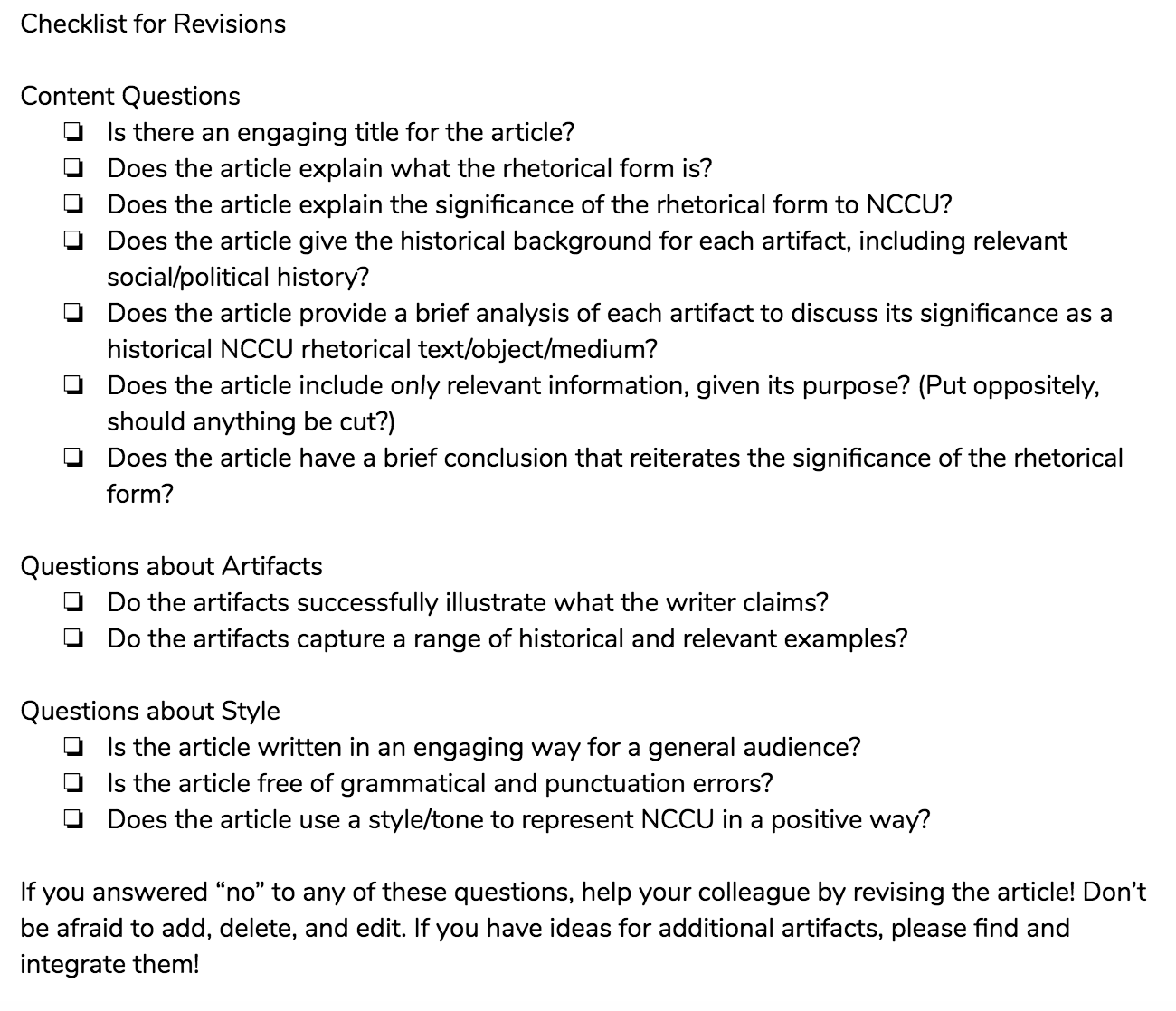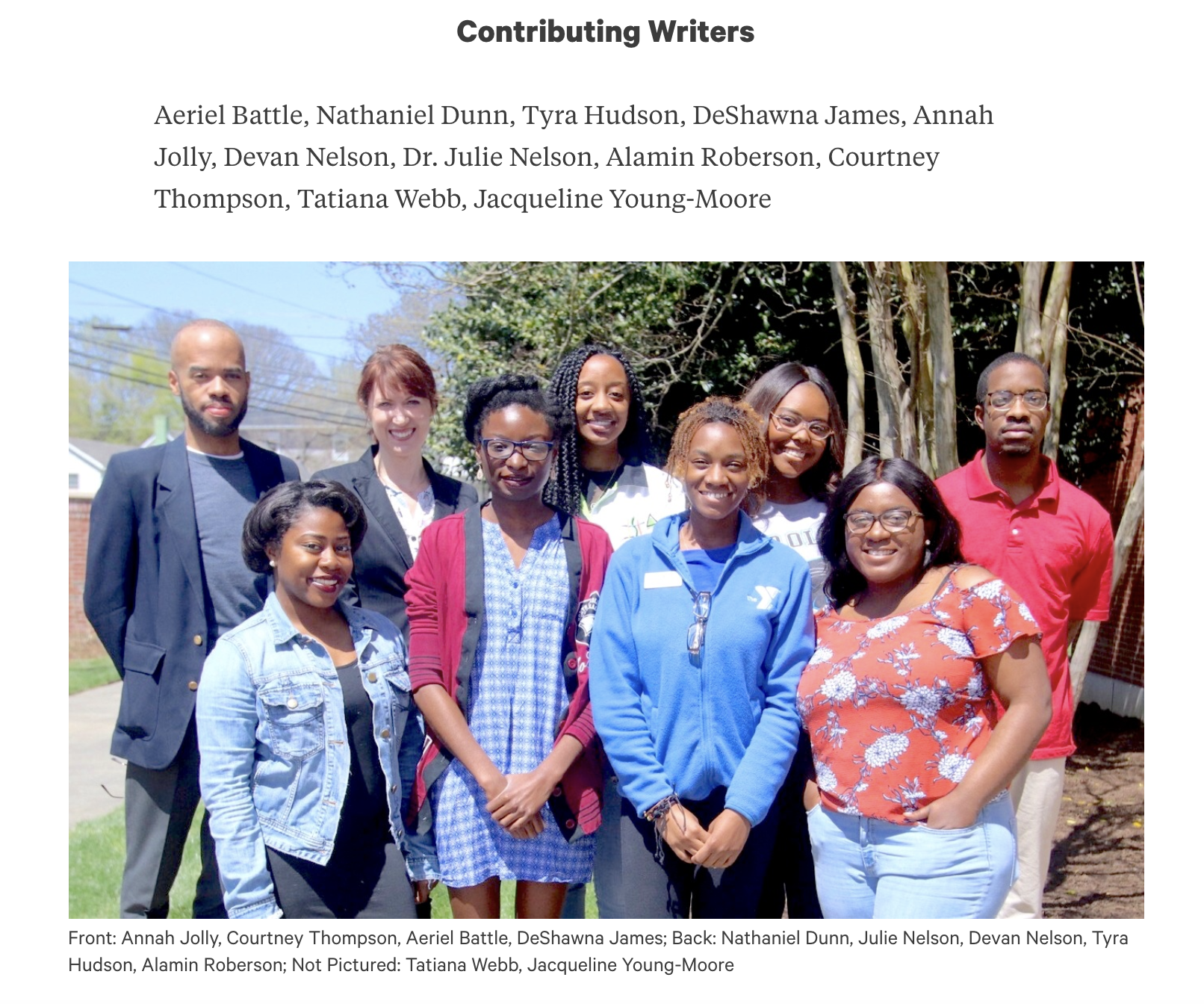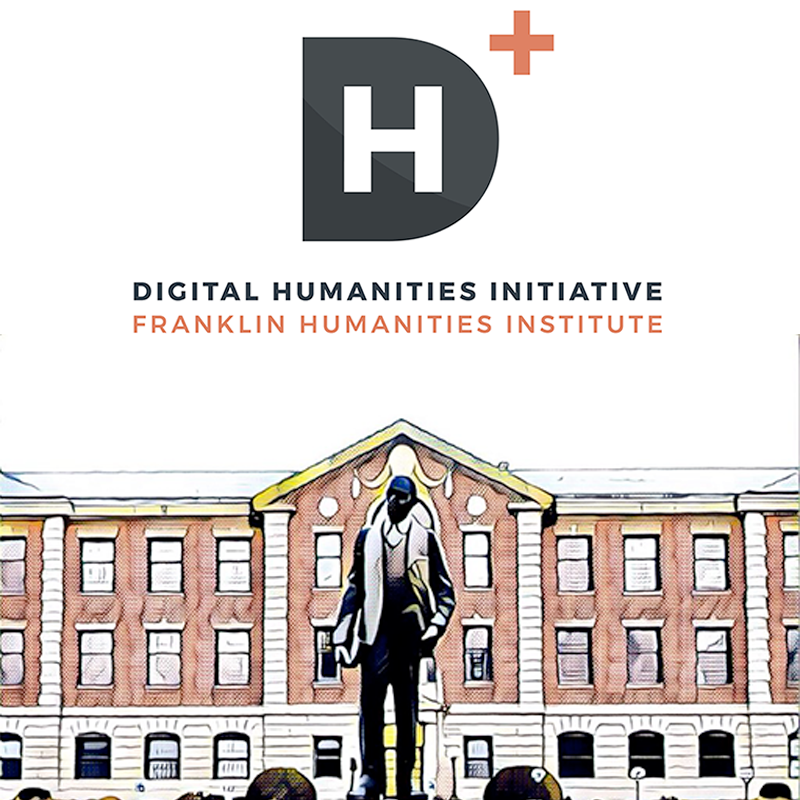Reflections by Julie D. Nelson on the Transforming NCCU Rhetorics course project, originally posted May 3, 2018. Prof Nelson was a fellow in the FHI-NCCU DH program in 2017-18.

Dr. Julie D. Nelson, North Carolina Central University
My project, Transforming NCCU Rhetorics: A Curated Collection, was completed in my spring History of Rhetoric course. The course was made up of mostly junior and senior English (writing) majors; ten students contributed to the project. Because many of the digital projects I have assigned in the past did not have longevity or reach an audience outside of the classroom, I wanted students to create a digital text for a local, public audience. The assignment asked students to engage in writing rhetorical histories of NCCU. My main goals for the project was to encourage students to
- Find historical university artifacts
- Compose in different media
- Expand their understanding of rhetoric and what is rhetorical
- Collaborate in revising and editing the project
To showcase a variety of rhetorical forms, each student chose a different medium, including rhetorics of speech, protest, food, art, music, dance, fashion, service, and modeling. Then, students wrote articles introducing their rhetorical form, including contemporary and historical multimedia artifacts, and discussing their significance to NCCU. For more specific guidelines, see ENG 4510 Midterm Project S18.
Students completed full drafts of their articles by midterm, so we could spend the rest of the semester revising, editing, and designing each article. I posted all of the articles and artifacts in a shared Google Drive folder so students could easily view other articles and edit them during several peer review sessions. Here is the checklist we used for peer reviews:

As a class, we created some style guidelines and decided to write in one collective voice, rather than attaching names to specific articles. We also decided to include a group photo at the end of the project:

Once the writing was polished, I put the articles into Atavist, a multimedia publishing platform. I chose Atavist because it beautifully combines digital media with text, and it transfers well to computers and cell phones. In class, I showed students some of the design options, we played around with their articles, and we worked on the title page and introduction together. Finally, I conferenced with each student to determine the layout, captions, images, etc. for his/her article.
Reflecting on the project, I believe it was successful in expanding students’ understandings of rhetoric and in practicing polishing writing for digital publication. Throughout the semester, students saw both the process and content of rhetoric digitally–a central goal for integrating DH into rhetorical studies. Because it is important to me that the project is viewed beyond our classroom, I am currently looking for places to post it, including on the Museum of Durham History website and my department website.
